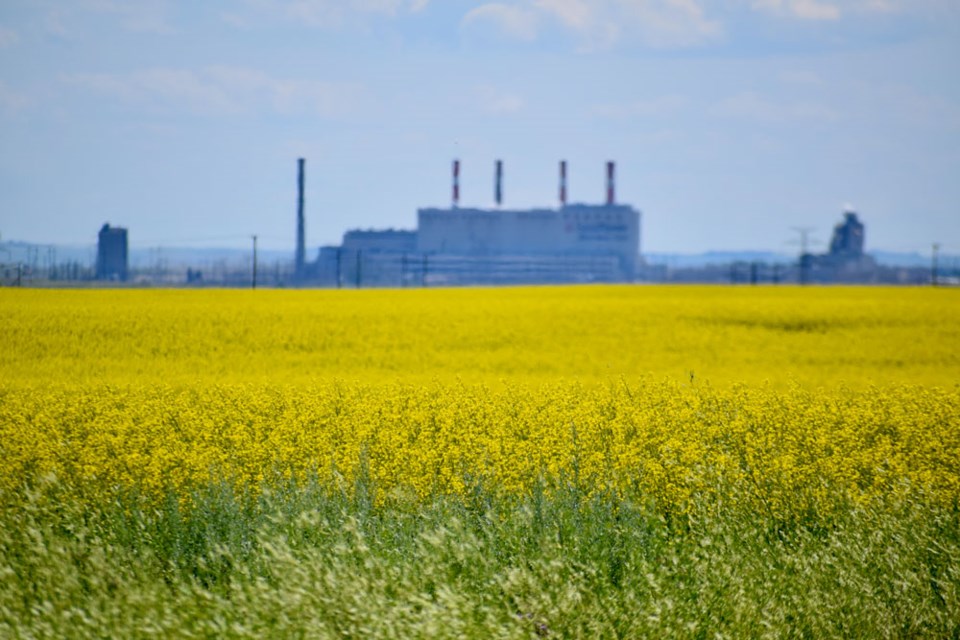The recent rains were hit and miss in southeast Saskatchewan, but they gave the crops enough moisture to grow and build up strength.
Saskatchewan Ministry of Agriculture crop extension specialist Sherri Roberts says most fields look good and before we know it, we’ll start meeting combines on the roads.
But Roberts noted that fields are still pretty spotty at this time.
“Some of them are fantastic. You get into the Glen Ewen area, over by Kipling they are short, but in Glen Ewen it’s tall. You get over by Redvers, they are really nice, but then you get to the areas around the south of Weyburn, they are short. It all depended on how the moisture came through. But everybody is looking at crops that will be harvestable this year,” said Roberts.
The level of moisture in the soil varies as well. Lampman, Glen Ewen and other areas received just the right amount of rain, but fields south of Weyburn had only some lifesaving moisture. If not for the mid-July rains, there wouldn’t be much of a crop for a few fields in the region. Roberts noted that such an uneven level of precipitations almost became a “customary habit” for the southeast over the past few years.
The majority of the farmers were able to take off last year’s crop that was left overwinter this spring. But a few decided that it wasn’t worth taking it off and just burned them.
“The majority did take it off, and some of them were actually really surprised … on the quality that they received. It was not as bad as they thought it was going to be,” said Roberts.
Last year’s crops set farmers back at the beginning of the season. But in the areas that received decent moisture, the later-seeded crops have caught up with the earlier ones now, while in the drier regions the difference is still obvious.
Roberts said that the general situation is good and there are no areas in the southeast where things would go completely wrong.
A lot of southeast Saskatchewan farmers invested in canola and cereals this year. Roberts also noticed an increase in lentils, but the soybean acres are down. And even though the crops are doing really well in general, there are always things to be cautious about.
“I would like to put out a word of caution,” said Roberts.
“Down here in the southeast, in the Lampman area, I did find ergot, it was on western wheatgrass. So any farmers that have any grass edges that still haven’t been mowed around their cereal fields, I would (recommend) to get out there and get them mowed because it’s the prairie grasses that the ergot will start in, and then it will move into your fields,” said Roberts.
She is also starting to see some fusarium. After having problems with it over the last few years, many farmers started doing proper and timely fungicide spraying, so Roberts expects to encounter fewer problems with this particular disease in the crops, but she is still seeing it starting up in the native prairie grasses, which may create problems for cattle farmers.
“Livestock producers should be watching their hayfields and their pastures, and walk in them, making sure that the levels don’t get too high in them because it can also create issues for their livestock.”
Fusarium has been fairly steady in a lot of areas in the southeast Saskatchewan for the last four years, with the rains coming down at the times when cereals were blooming and creating the environment for the disease development.
Roberts also noted that there is possible aster yellow showing in flax in the southeast, so she urged farmers to make sure that they make it out to the fields and check their crops regularly while they still can fix arising problems.
Despite the drier June, Roberts still expects the first combines to pull out into the fields as early as the first week of August.
“There is a strong possibility that that can happen. We’ve got some amber fields of grain out there waiving. And I’m seeing some starting to actually get some turns on the ones that were put in early.”
If the weather holds and southeast Saskatchewan keeps receiving heat, the harvest may start in a little over a week.



.png;w=120;h=80;mode=crop)
